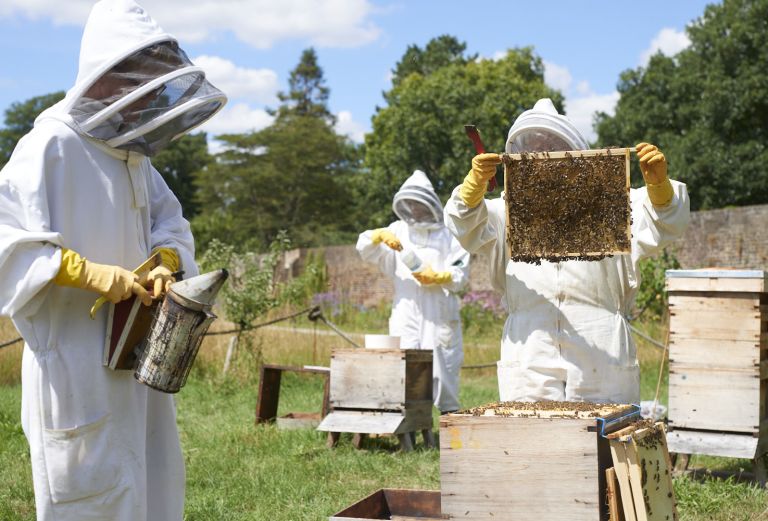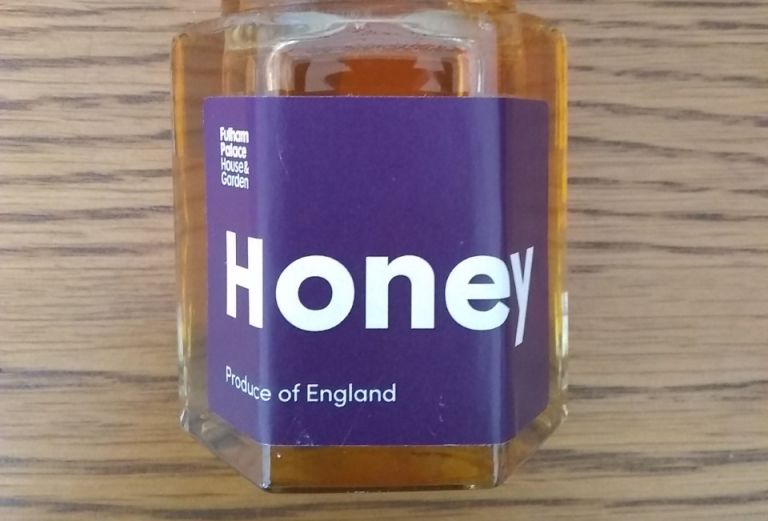
Matt Weston, garden apprentice
In mid-June I slipped on the beekeeping outfit (bee suit) for the first time and assisted the beekeepers in introducing a new hive to the apiary. I can distinctly remember feeling excited and slightly apprehensive. When the bees rose out of the hive the buzzing felt like a gentle roar, and in the same way a deep blue sky can make you feel weightless on a spring morning, I felt completely unencumbered.
We worked quickly to ensure the bees were disturbed for the shortest possible time and within no time at all the hive was settled and relocated to its new home.

Fast forward two months and our amazing team of beekeepers invited the garden apprentices to assist with harvesting the honey. They expertly extracted the capped frames from the supers of established hives and bagged them up. Like all things in nature you need to know how much to take and how much to leave. Getting this balance right can mean the difference between the hive making it through the winter successfully or starving.
Getting the honey out of the frames was where the garden apprentices came in. After demonstrations from the beekeepers on how to check the frames for suitable nectar or honey levels, we used a knife to uncap the cells. Cutting away the wax over the drip tray meant not a drop was wasted. At this point the aroma in the room changed to a slight smell of rich honey with a hint of woodiness.


Once the frames were uncapped, they were placed in the radial racks of the extractor and cranking the handle we spun the honey out of the frames. The honey collected in streams on the side of the extractor until all the cells were empty. When removing the frames, the colour and weight difference was really noticeable.


Then came the first of the sieving processes. This was to remove any pieces of honeycomb that had come loose during extraction.
This finer gauze sieve ensured nothing but pure honey and traces of pollen remained.


The honey would later rest for two weeks in the settling bucket to allow the wax to rise to the surface. Once this had been removed, the beekeeping team bottled the remaining honey and made beeswax candles, ready for sale on Apple Day on Sunday 4 October.
We hope to see you there!
